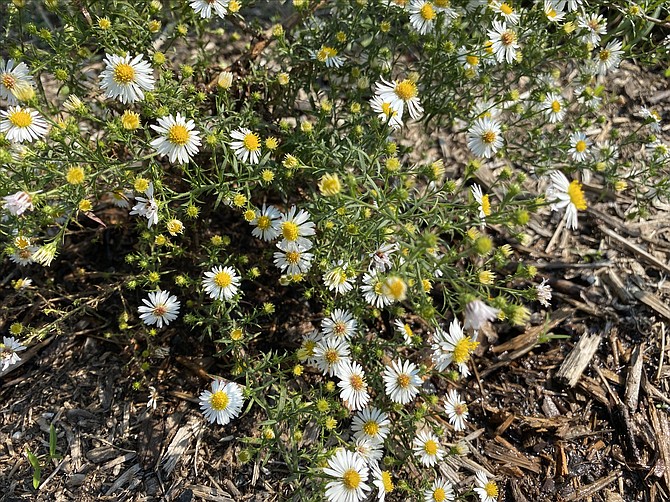Asters, (Asteraceae) from the Greek word for “star”, with five families and over 170 composite species; 25 found in Virginia. It’s daunting to try to identify the specific species along our trails, like these Hairy White Oldfield Asters (Symphyotrichum pilosum). But insects find their way in great numbers to the small daisy-like flowers, visited by a large variety of bees, bumblebees, butterflies, moths, wasps, beetles and flies. Susan Laume
Nature’s fresh produce market is open with its bounty of late season offerings of nectar, fruits, and nuts for insects, birds, and mammals. The fall bounty is important to wildlife providing for their young, preparing for migration or stopping along the way, or building fat stores to carry them through less bountiful periods of colder weather. Trees and plants gain by propagation through pollination and scattering seeds. This beauty also draws attention to the interconnection of the elements of our ecosystem and the importance of insects and wildlife to our living world.
Photos by Susan Laume
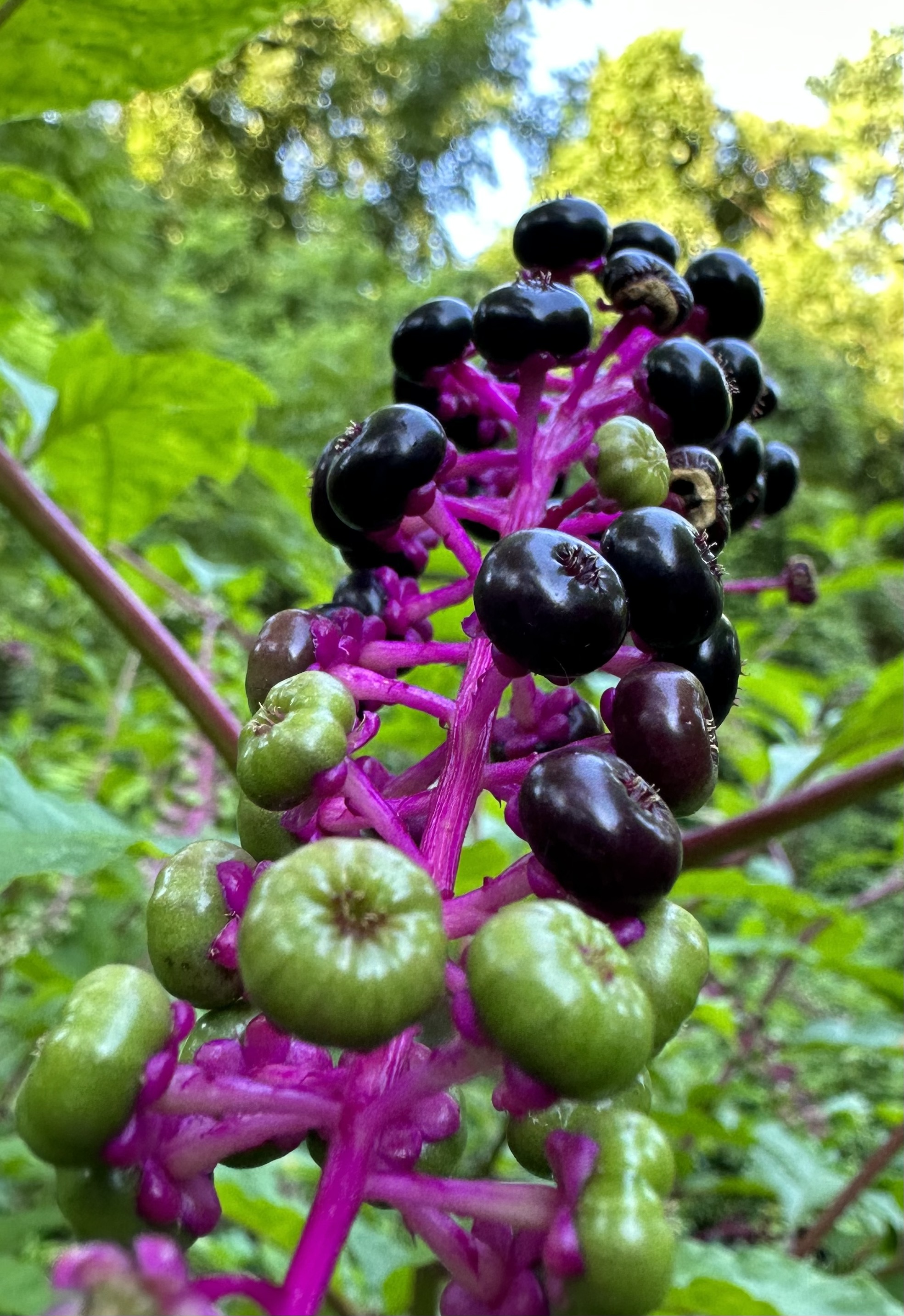 American Pokeweed (Phytolacca americana) has hanging clusters of berries on reddish stems; the juice can be used as ink and dye, though all parts are poisonous. Food source for song birds and smaller mammals such as white-footed mice, even opossums and raccoons, which are not affected by its toxins. Its name comes from the Algonquin word meaning plant. Likely used in the novel “Hunger Games” as the berries Katness offered to Peeta. Katness’s name, also likely comes from another plant, Sagittaria, whose common names include Arrowood and Katniss, the latter used for the heroine in the story who is an archer.
American Pokeweed (Phytolacca americana) has hanging clusters of berries on reddish stems; the juice can be used as ink and dye, though all parts are poisonous. Food source for song birds and smaller mammals such as white-footed mice, even opossums and raccoons, which are not affected by its toxins. Its name comes from the Algonquin word meaning plant. Likely used in the novel “Hunger Games” as the berries Katness offered to Peeta. Katness’s name, also likely comes from another plant, Sagittaria, whose common names include Arrowood and Katniss, the latter used for the heroine in the story who is an archer.
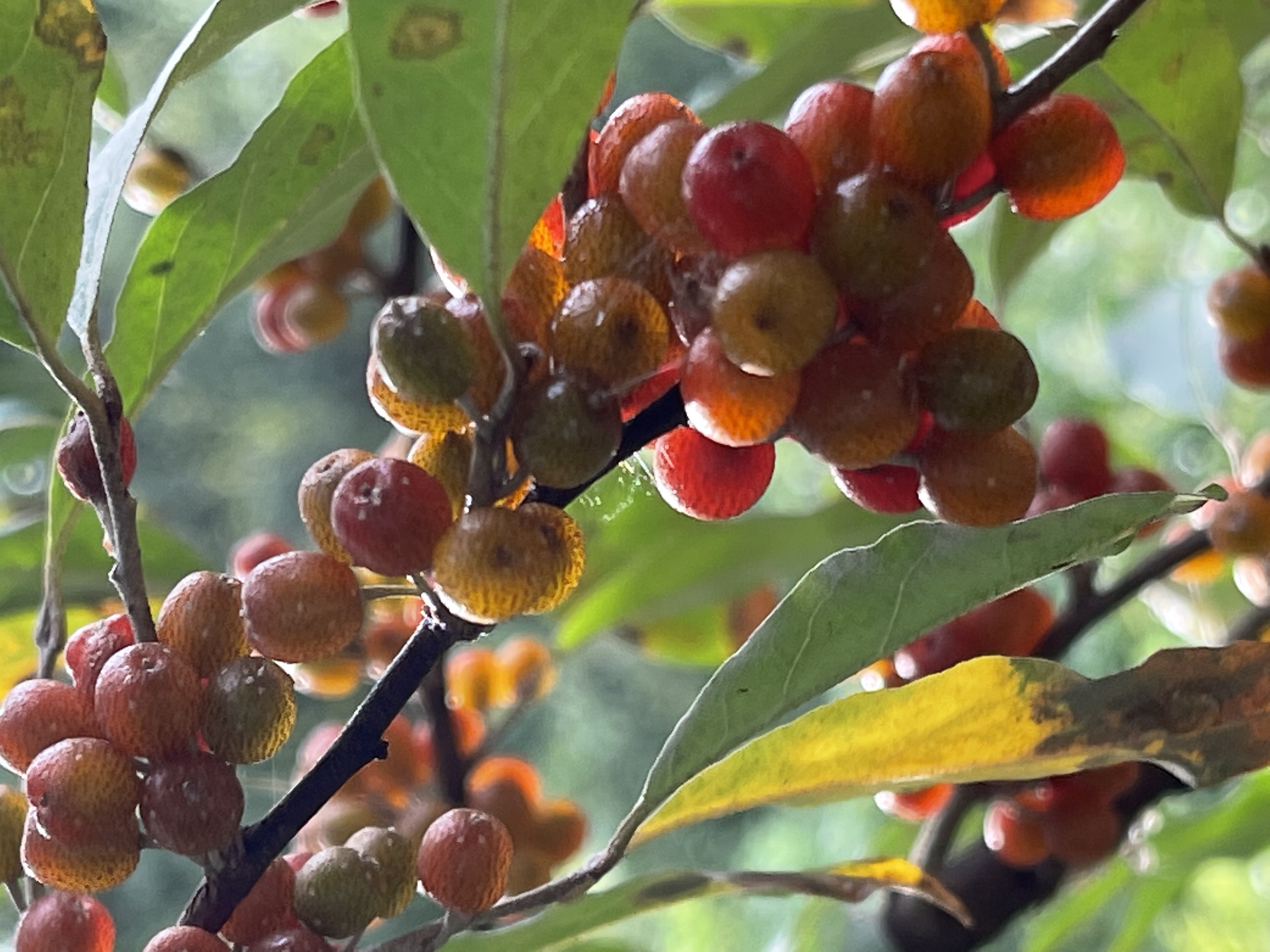 Autumn Olive (Elaeagnus umbellate) a deciduous shrub introduced in the U.S. in 1830 from east Asia, with small edible berries, when fully ripe; principally provides food & habitat for wildlife but an aggressive propagator and shades out native plants, degrading the native plant community
Autumn Olive (Elaeagnus umbellate) a deciduous shrub introduced in the U.S. in 1830 from east Asia, with small edible berries, when fully ripe; principally provides food & habitat for wildlife but an aggressive propagator and shades out native plants, degrading the native plant community
 Black Cherry (Prunus serotina) is not closely related to cultivated sweet cherries but it’s one-third-inch fruit is sometimes used in making jellies and wine; an important food source for many birds and wildlife.
Black Cherry (Prunus serotina) is not closely related to cultivated sweet cherries but it’s one-third-inch fruit is sometimes used in making jellies and wine; an important food source for many birds and wildlife.
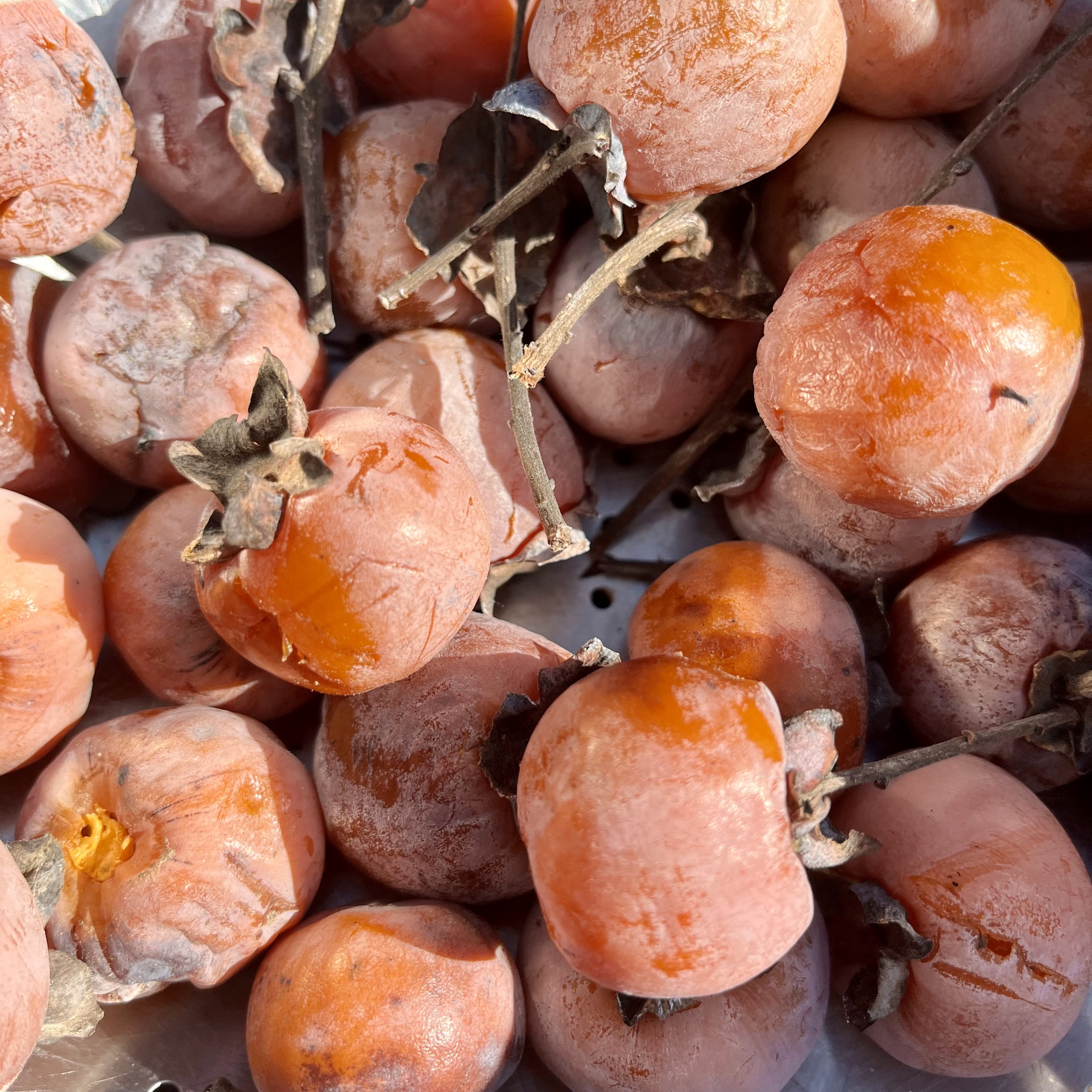 Persimmon (Diospyros virginiana) produces plum-like 3/4 to 2 inch fruit that is edible when ripe. A favorite of raccoons, opossums, foxes, skunks, and songbirds; also eaten by humans. Native Americans used them to make fruit bread.
Persimmon (Diospyros virginiana) produces plum-like 3/4 to 2 inch fruit that is edible when ripe. A favorite of raccoons, opossums, foxes, skunks, and songbirds; also eaten by humans. Native Americans used them to make fruit bread.
 Bradford Pear (Pyrus calleryana) a native of China, Japan and Vietnam, the fruit is eaten by birds after freezing softens the hard fruit that resembles apples. Bradford Pear trees are an aggressive invasive that forms large colonies and are no longer recommended for planting. South Carolina recently became the second state to ban nursery sale of the tree, effective in October 2024.
Bradford Pear (Pyrus calleryana) a native of China, Japan and Vietnam, the fruit is eaten by birds after freezing softens the hard fruit that resembles apples. Bradford Pear trees are an aggressive invasive that forms large colonies and are no longer recommended for planting. South Carolina recently became the second state to ban nursery sale of the tree, effective in October 2024.
 Virginia Pine (Pinus virginiana) produces many egg-shaped seed cones. Small songbirds eat the seed, woodpeckers nest in older trees. The 1-1/2 to 2-3/4 inch cones remain on the tree for several years.
Virginia Pine (Pinus virginiana) produces many egg-shaped seed cones. Small songbirds eat the seed, woodpeckers nest in older trees. The 1-1/2 to 2-3/4 inch cones remain on the tree for several years.
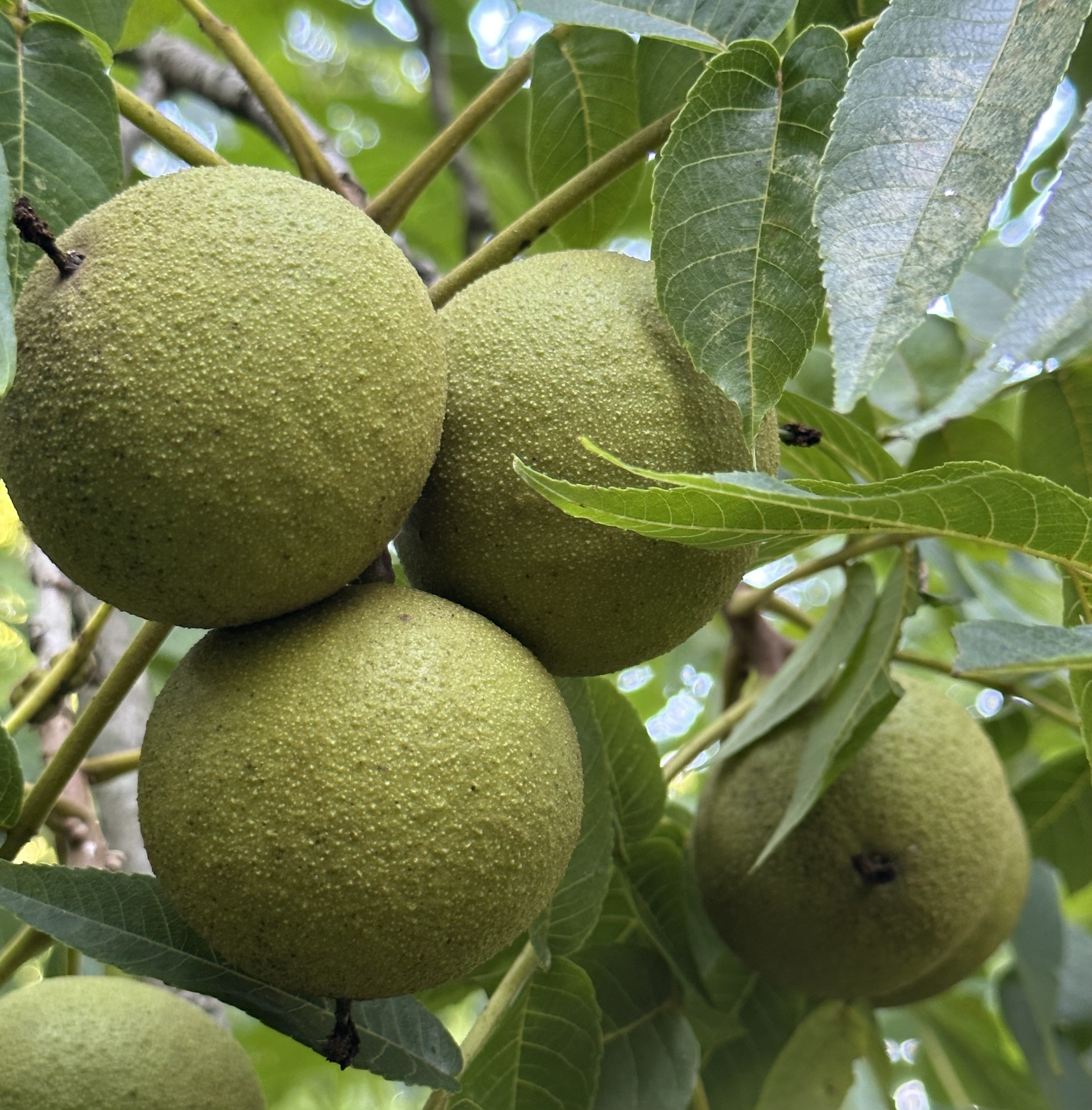 Black Walnut (Jugulars nigra) one of America's most valuable trees, prized for its wood which is resistant to decay, and nuts so loved by squirrels that they will chew through anything possible to reach a stash; also enjoyed by birds and people.
Black Walnut (Jugulars nigra) one of America's most valuable trees, prized for its wood which is resistant to decay, and nuts so loved by squirrels that they will chew through anything possible to reach a stash; also enjoyed by birds and people.
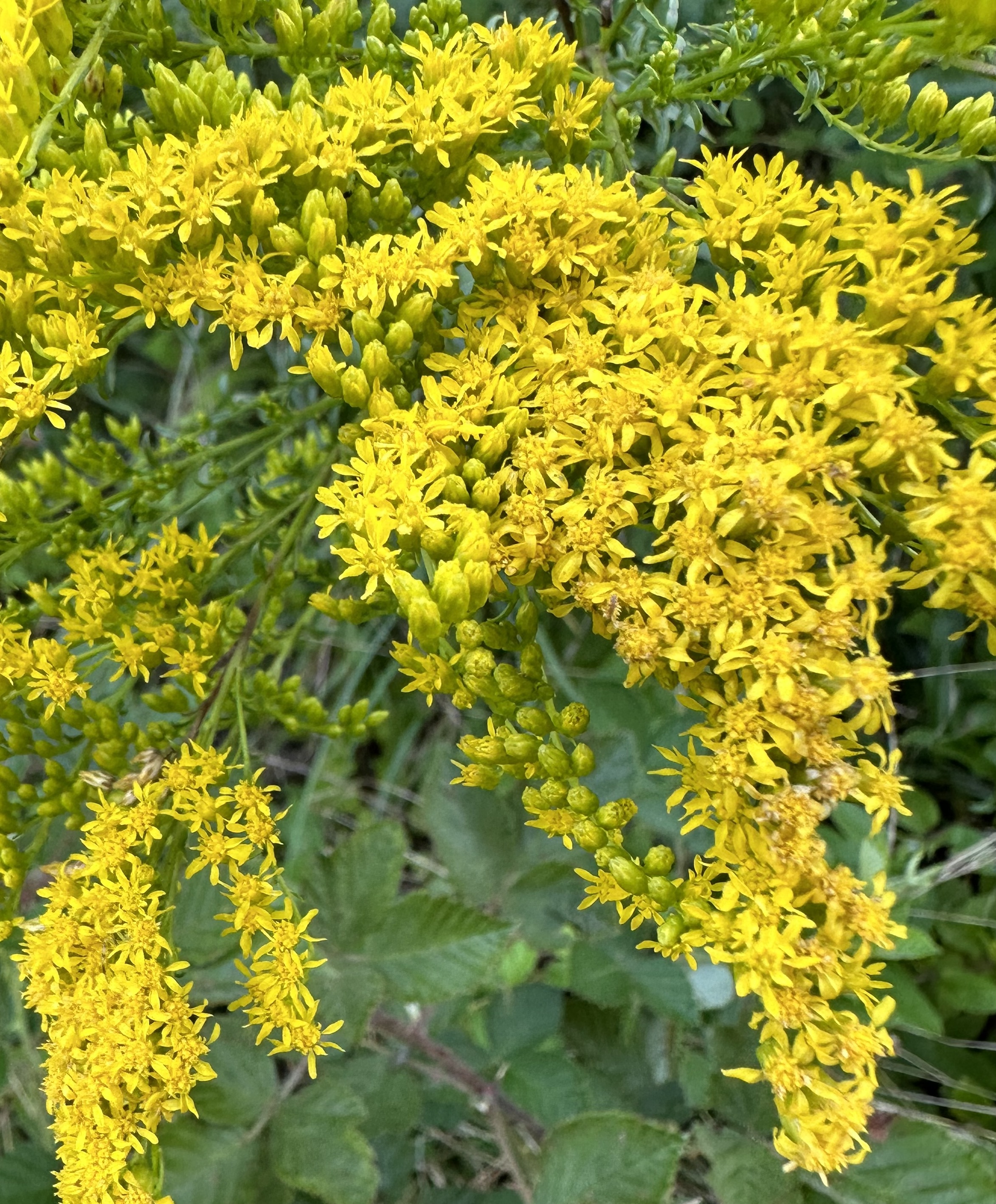 Goldenrod (Solidago), with over 100 species world-wide, is considered a keystone species, meaning it has a disproportionately large effect on the natural environment. It has been called the single most important plant for North American pollinator biodiversity. Eleven native bee species feed specifically on its flowers, and is used as a food source for many butterfly larva; songbirds eat the seed-heads; traditionally used in herbal medicines. It provides a very important late-season nectar source.
Goldenrod (Solidago), with over 100 species world-wide, is considered a keystone species, meaning it has a disproportionately large effect on the natural environment. It has been called the single most important plant for North American pollinator biodiversity. Eleven native bee species feed specifically on its flowers, and is used as a food source for many butterfly larva; songbirds eat the seed-heads; traditionally used in herbal medicines. It provides a very important late-season nectar source.
